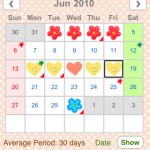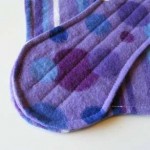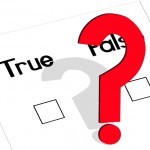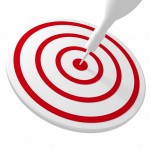Periods Aren’t Just For Sentences
Has your daughter asked you yet what a period is? And have you answered ‘a period comes at the end of a sentence?’. Although my daughter didn’t ask about periods at a young age, she did ask what sex was. I cleverly answered that it was how to tell if someone is a girl or a boy. She was about 4 years old and I was just not ready to start discussing sex with her. We all find ourselves in these awkward positions with our kids but they don’t have to be awkward. Having a few simple explanations ready for when the questions come helps.
The complicated but complete answer for what a menstrual period is goes something like this:
When a girl’s body gets to the right stage of development, it will start to release an egg each month of one of the two ovaries. The lining of the uterus will thicken in preparation to hold and nourish a fertilized egg.
The egg is released two weeks before bleeding starts. Most of the time the egg is not fertilized causing it to be flushed from the body through the vagina along with the lining of the uterus. A menstrual period is that time when the egg and uterine tissue are being flushed.
A simpler explanation for a younger child might be:
We all grow from eggs just like birds do. A bird’s egg grows in a nest and a human egg grows in a uterus, the difference is that a uterus is inside a mommy’s body. If the nest isn’t needed it falls apart to make room for a new nest. The old pieces leave mommy’s body during her monthly period.
It is important to use the correct words for body parts when children are young so they become familiar with the words and are comfortable saying them. This will help in later years when they are learning about their bodies in school. If something hurts, children will also be better able to describe symptoms to a doctor.
The other key thing to remember when discussing these topics with our children is that we feel awkward, so will our children. Which means they might not turn to you for other questions later in life. Keeping the conversation channels open early in life will only benefit both of you as your children grow older and face more challenging issues in their lives.

 As most women know, the first question asked at each gynecology visit is ‘What was the first day of your last period?’ Doctors ask this question to determine how regular a woman’s menstrual cycle is and if the woman is pregnant, the date helps determine the approximate day of conception. Learning how to track your period is therefore a handy skill to have.
As most women know, the first question asked at each gynecology visit is ‘What was the first day of your last period?’ Doctors ask this question to determine how regular a woman’s menstrual cycle is and if the woman is pregnant, the date helps determine the approximate day of conception. Learning how to track your period is therefore a handy skill to have. In this day and age in the United States we seem to have a product to fit every choice. Whether it be food, shoes, homes, or even yes, feminine hygiene pads, there is something unique that fits your life style. It can be confusing to sort through all the options but once you find the perfect fit you will probably be a customer for life.
In this day and age in the United States we seem to have a product to fit every choice. Whether it be food, shoes, homes, or even yes, feminine hygiene pads, there is something unique that fits your life style. It can be confusing to sort through all the options but once you find the perfect fit you will probably be a customer for life.



 Our Friday period fact series continues with information about cramps. Not every girl will suffer from cramps, but for those that do, it can be a bothersome nuisance and interfere with everyday activities.
Our Friday period fact series continues with information about cramps. Not every girl will suffer from cramps, but for those that do, it can be a bothersome nuisance and interfere with everyday activities.